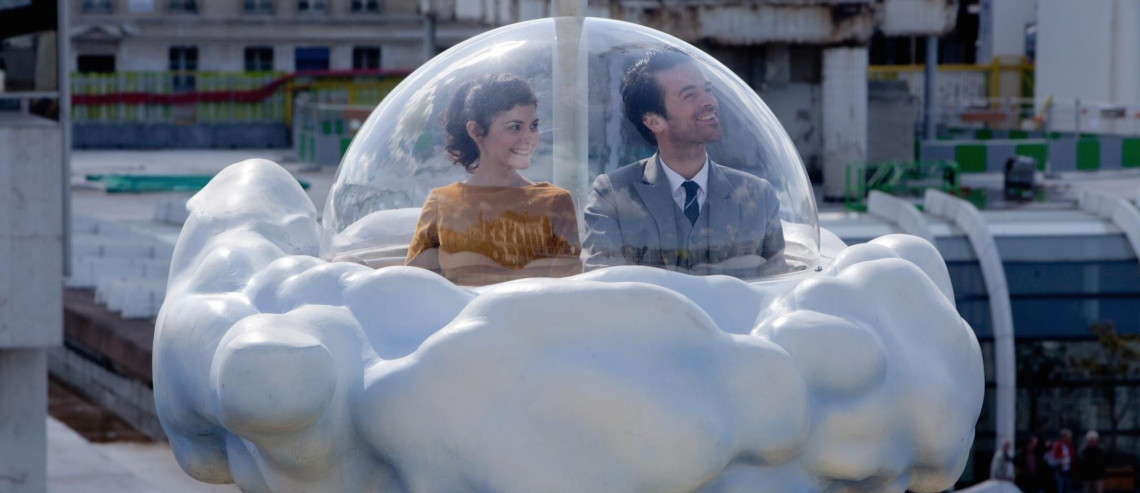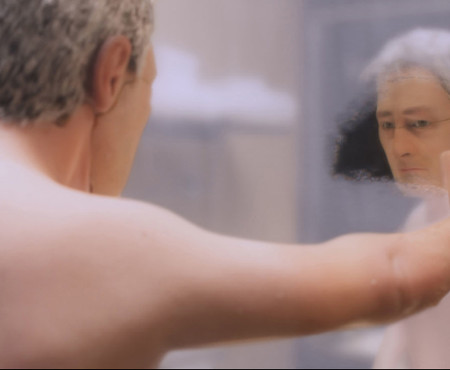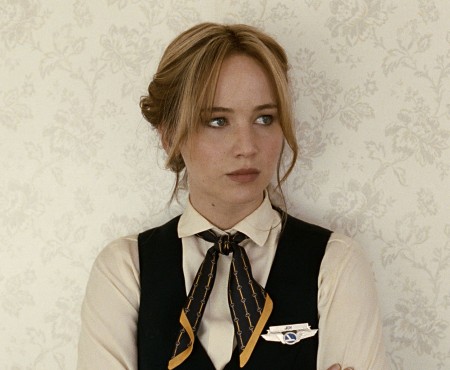There are levels to twee, and there are indeed levels to how much twee a person can withstand in one sitting. Michel Gondry’s Mood Indigo often comes dangerously close to exceeding the limit, but there is something so deliciously intriguing about the film in spite of its mincing romance that ultimately makes it more than tolerable.
The film is based on an apparently unfilmable book, the 1947 novel Froth on the Daydream by French author Boris Vian. It tells the idiosyncratic love story of a rich, eccentric young man named Colin (Romain Duris) who loses his fortune after marrying Chloe (Audrey Tautou), a woman suffering from a strange and expensive illness that requires her to be surrounded by bouquets of fresh flowers at all times.
Gondry’s creation is dense with the kind of distorted whimsy that we’ve grown accustomed to in films like Be Kind Rewind, Eternal Sunshine of the Spotless Mind, and The Science of Sleep. There are fanciful props and practical effects, but unlike his past films, the Mood Indigo universe is one that exists without some sort of rationalizing conceit – we are not in the realm of memories or in dreams, but in a real, violently whimsical world teeming with casually introduced and unexplained eccentricities and absurdities.
This makes for many visual delights: a fish dinner that comes to life in gorgeous stop-motion animation; a sentient doorbell that scuttles across the floor like a beetle; dancers with long, papier-mâché limbs swaying to Duke Ellington; and a date where Colin and Chloe sail over the picturesque Parisian streets in a plastic cloud, an echo of the see-through stretch limo they will later drive off in after their whirlwind wedding.
Some may say the film is far too quirky for its own good. Gondry and co-writer Luc Bossi’s surreal flourishes at the very least seem to visually capture the spirit of Vian’s original novel, but they do at times feel emotionally distancing. While there’s no denying that while the movie is a joy to watch, its weakness lies in the centerpiece of the story – the romance between Colin and Chloe.
Buris and Tautou (basically playing varying shades of Amelie) are cute, but nothing more. Rather than really seeing them interact with each other, much of their story revolves them reacting with the oddities of the world in which they live. It’s the Romeo & Juliet effect: for much of the movie, the most compelling thing about this one-dimensional pair is their inevitable, tragic end. Still, the romance’s weaknesses are supplemented by a fabulous supporting cast featuring Omar Sy, Gad Elmaleh, and the enchanting Aissa Maiga, who manage not to be overshadowed by the albeit entertaining effects and production design.
As tempting as it is to write this film off as a self-indulgent exercise in cinematic acrobatics, it’s in the final act, as things get bleaker for Colin, that something shifts. The movie’s universe suddenly widens, connecting with ours. It is not a subtle change – the film’s palette darkens as the tone gradually changes, with all that zany scenery literally crumbling off the screen. Mood Indigo is perhaps the most “Michel Gondry” of Michel Gondry films, one in which he uses his fascination with the construction and destruction of on-screen illusions as a beautiful kind of metaphor for a love. By the film’s end, whether the film is twee is kind of irrelevant. It works.




















